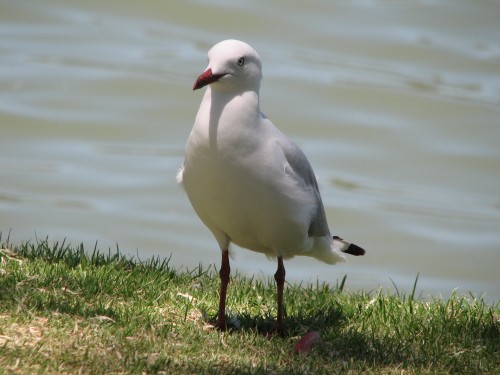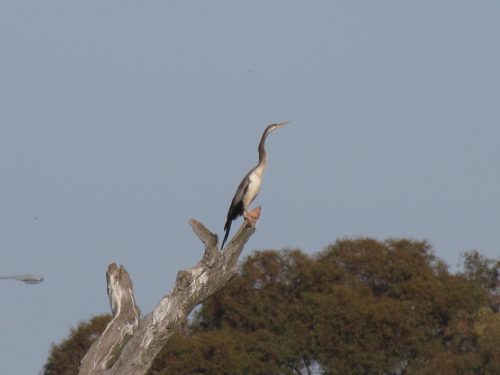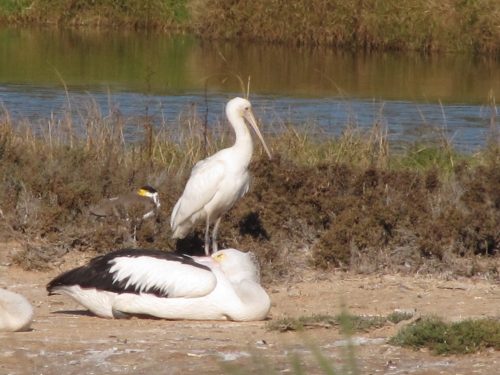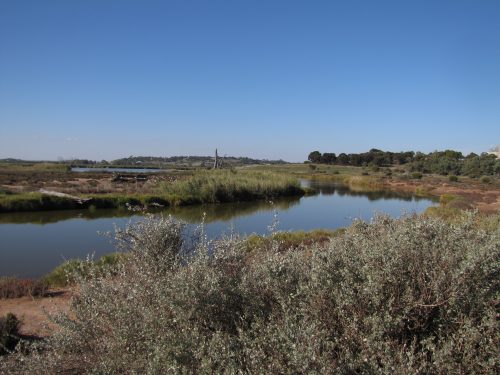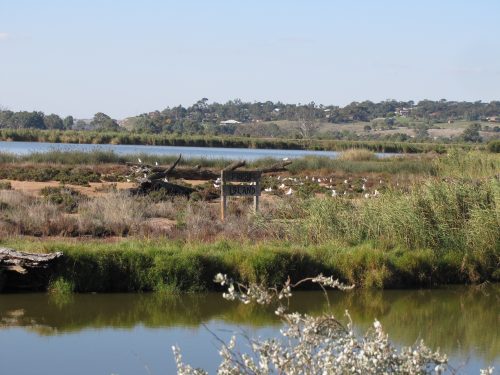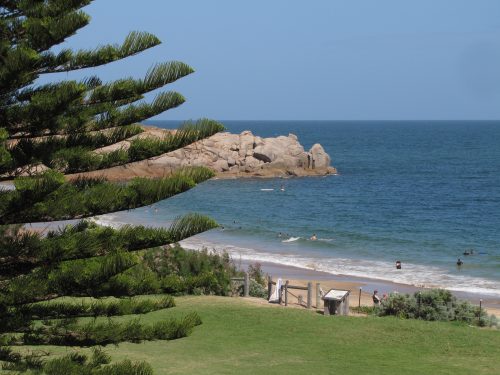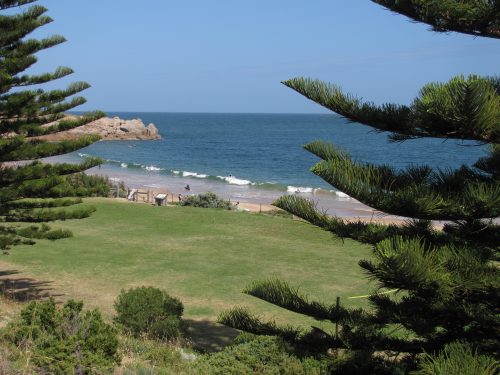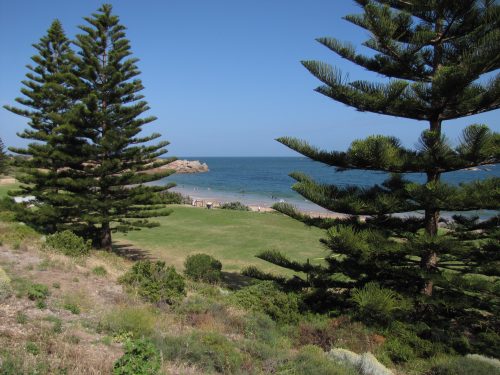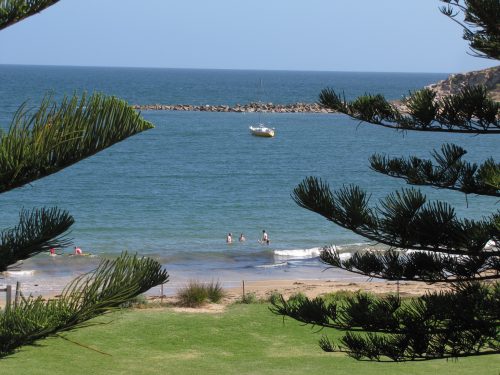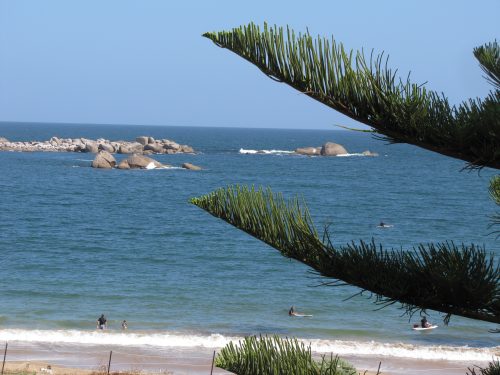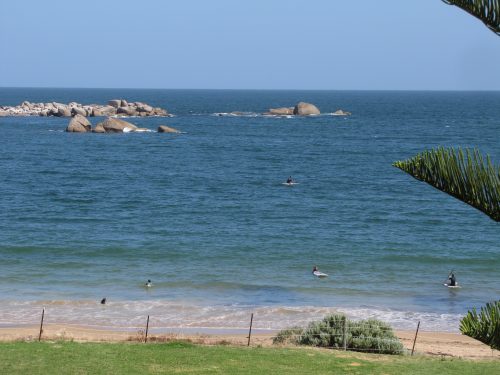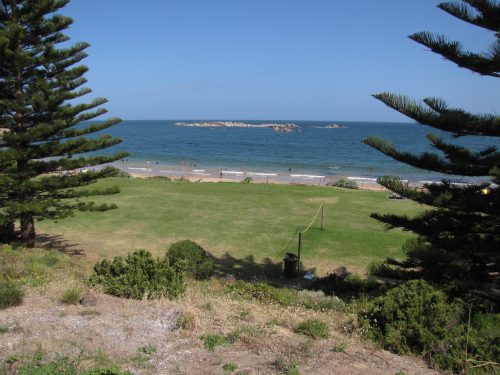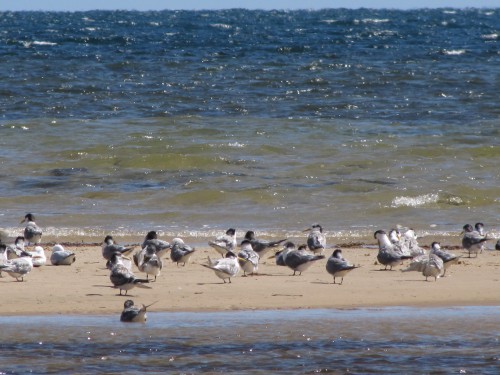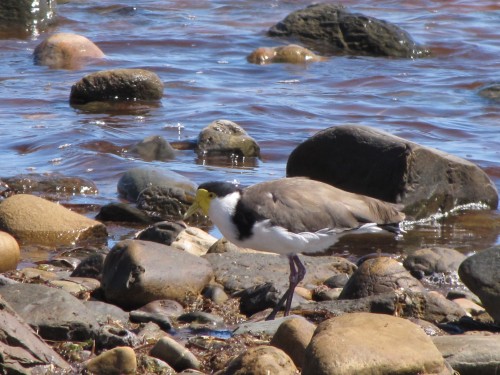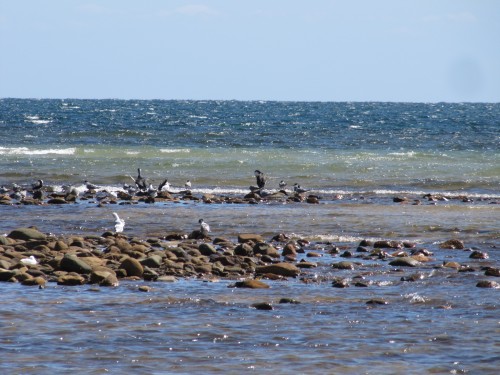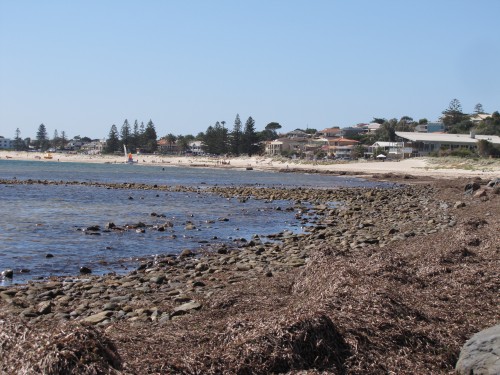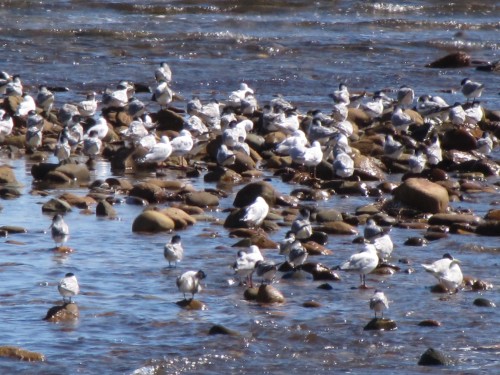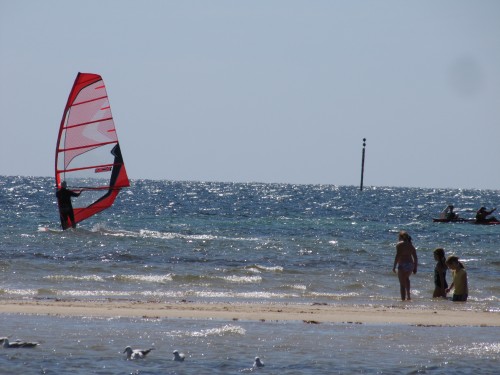Great Birding Moments #8 Silver Gull
I love it when birds allow me to come quite close to them in their natural habitat. And it’s even greater when they pose in such a way that they make it so easy to get a great photo. Earlier this year on a visit to Sydney we were walking along near Circular Quay when I saw several Silver Gulls up close. The above photo is the best of those taken at the time.
Now for readers who have never been to Sydney, Circular Quay is a very busy place on the harbour. Trains rattle overhead every minute or so. Ferries and other boats are coming into the dock or leaving every minute or two. People on foot are moving past in their thousands every hour. It is a hustling, bustling and noisy part of the city.
Silver Gulls seem to thrive here. That’s not surprising, because the outdoor restaurants and food outlets are everywhere. Our Silver Gulls seem to adore takeaway and fast food!
Related posts:
Fat Sea Gulls
In a recent report on ABC News it has been found that Silver Gulls are becoming overweight. Over the last two years University of Tasmania researcher Heidi Auman has been studying Silver Gulls in Hobart and on the Bass Strait islands. She has found that the city birds have a higher cholesterol as well as being overweight when compared to their island dwelling counterparts.
Poorer Breeding results
In addition to being fatter, the city dwellers are laying more eggs but there are less chicks surviving. The main reason for their unhealthy state is a poorer diet. The gulls are not getting the correct food as they scavenge rubbish tips – and get fed by people having picnics.
For more, click here. (Sorry – the link no longer works.)
Updated Nov 2013
Rocky Gully Wetlands, Murray Bridge
Earlier this year I spent a whole afternoon birding at various sites around my hometown of Murray Bridge here in South Australia. One of those sites was the Rocky Gully Wetlands on Mannum Road. I frequently drive past this wetland area, glancing at the lagoons as I drive, but not stopping. I need to change that and linger for a few minutes and take a much more careful note of the birds present. That action is probably safer than birding while driving, anyway.
Bush birds
On this occasion, there were plenty of birds present. Around the lagoons, there were quite a few smaller bush birds in the trees and shrubs that have been planted in the area. This included Red Wattlebirds, White-plumed Honeyeaters, Singing Honeyeaters and New Holland Honeyeaters. I heard a Grey Shrike-thrush calling and several times I heard the resident Superb Fairy-wrens twittering their soft calls to each other. Several Crested Pigeons were present and three Galahs were the only parrots seen at this location. Normally, I would expect to see Little Corellas and several kinds of Lorikeets here. They were absent on this visit.
Waterbirds
On the water of the lagoons or on the several islands I could see quite a few Grey Teal and Chestnut Teal, but interestingly, no Pacific Black Ducks which are very common in this area. A small number of Black-winged Stilts, Eurasian Coots and a solitary Purple Swamphen were seen, along with four Australian Pelicans, a White-necked Heron and a Great Egret. The egret was slowly wading in the shallows looking for a feed. It is a pity I didn’t get a good photo of this bird and its reflections in the water.
Of particular interest were the small group of both Royal and Yellow-billed Spoonbills. I always love seeing these species wherever I go birding. The most interesting sighting, however, was the count of twelve Australasian Darters. While this number is common in many parts of Australia, I have never seen so many in one spot in this region. Probably the most numerous species present were the Silver Gulls, with between 30 and 40 birds around the wetlands.
Further reading:
For each of the species mentioned in this post, I have written one or more articles about them on this site. To read them, go to the search facility in the top right-hand corner and type in the name of the species.
Newsletter:
I also invite you to subscribe to my occasional newsletter (see below the comments).
Good birding,
Trevor
Birds of Horseshoe Bay at Pt Elliot
Last week I wrote about a trip I took with my wife to celebrate our anniversary. We travelled from Murray Bridge to Victor Harbor which is just over an hour’s drive south-west from home. Along the way, we stopped at Milang, then at Goolwa, followed by an exploration of Hindmarsh Island, on to Pt Elliot and ended up having dinner at a favourite restaurant in Victor Harbor. While the day-trip was meant as a day out for relaxation, I had plenty of opportunities to do some casual birding wherever we stopped.
Pt Elliot is a lovely town of around 2000 population which swells in number during our long, hot summers. It is located on the south coast of the Fleurieu Peninsula and was established as a port in 1851. It boasts the reputation of having Australia’s first public railway line which extended from Goolwa. This railway line provided a means to carry cargo to and from the riverboat trade on the Murray River to seagoing ships. The mouth of the Murray River was considered too treacherous to navigate. The railway line is still in operation, though now it only carries tourists.
Pt Elliot has a delightful, and quite safe, little beach known as Horseshoe Bay. On our visit, it was very crowded despite the cool breeze. The local lawn bowls club is right next to the beach, and adjacent to the Flying Fish restaurant, known widely for its excellent seafood menu. The local caravan park just around the bay a little is very popular in the summer months.
The birdlife here is a mixture of land birds and coastal birds. Of the coastal birds, I was not able to identify many on this visit. On Pullen Island out in the bay, I could see hundreds of Silver Gulls and several Pacific Gulls. A small group of Little Pied Cormorants rested on the rocks while the occasional Whiskered Tern, Crested Tern or Caspian Tern flew overhead. On the islands, I am sure that there were a few terns as well, though my binoculars were not strong enough for me to be certain.
Away from the water, the Singing Honeyeater is a common bird of the coastal dunes and nearby bushes. Crested Pigeons can be seen throughout the town, often perched on rooftops or television antennae. Small flocks of Galahs and Little Corellas flew overhead. More frequently encountered are the Rainbow Lorikeets, either screeching as they fly low overhead, or noisily feeding on any flowering tree of bush in the gardens nearby. The lawns were attractive to the Australian Magpies, their keen eyes on the lookout for beetles, worms and other tasty morsels.
Further reading:
- Readers can go to further articles about some of the birds and places mentioned in the text by clicking on the links in blue.
More birding at Brighton Beach
In my last post, I wrote about our weekend at Brighton Beach in the southern parts of Adelaide. During our short caravan holiday with a group of friends, we stayed in the Brighton Caravan Park – which is actually in the suburb of Kingston Park. During the weekend, most of my time was occupied chatting with my friends. We spent quite a few hours in our comfortable folding chairs, sitting at the top of the beach watching the passing parade of people walking, running, playing in the water and various water sports. Included in this constantly changing scene were various birds, mostly seabirds.
Probably the most common birds were the Silver Gulls and Crested Terns shown in the photo above. from time to time I would also see immature Pacific Gulls, as well as the occasional Little Pied Cormorant. There was an area of exposed rocky outcrops at low tide, and for much of the weekend, two Masked Lapwings spent many hours foraging for food in the seaweed and rocks. I have shown one of the birds in the photo below. I am amazed at how well camouflaged this bird is against the surrounding rocks.
On the Sunday afternoon, most of our friends went for walks along the beach. I also decided to go for a short stroll, taking photos as scenes presented themselves. The tide was slowly coming in, covering some of the rocky areas and sandbars, providing a smaller area for the roosting birds. I sat on a nearby rock for over half an hour, photographing birds, people, and boats.

